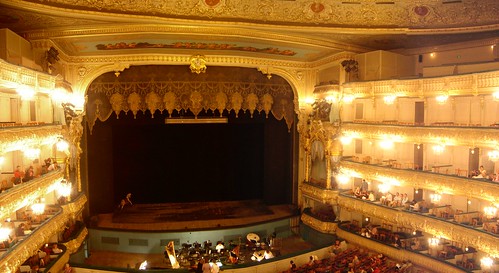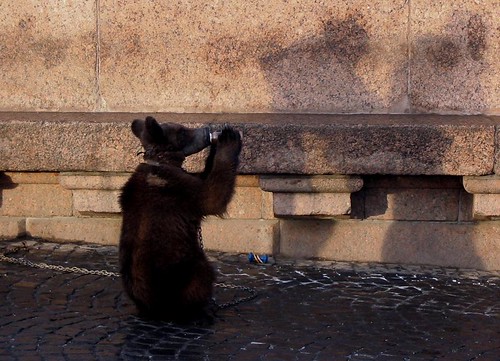
------------------------------------------------------------------------------------------------------------------
Introduction
St Petersburg is a relatively young city, by both Russian and European standards, and was only founded in 1703 by Tsar Peter the Great. Despite its short life so far, Petersburg has a rich and exciting history. Three centuries have past since its first structures were raised on the banks of the Neva River, but during this period Saint Petersburg has been forming as the "eternal city", whose beauty and harmony are unrivalled. Saint Petersburg sense of its own identity owes to its origins and to the interweaving of myth and reality throughout its history.
History
Saint Petersburg was founded by Russian Tsar Peter the Great the Northern War of Russia with Sweden. May 16 1703 is seemed to be the date of St.Petersburg foundation. The famous Peter and Paul fortress (see livecam image: ) with the church in name Saints Peter and Paul was laid in the Zayachy Island on the delta of the Neva River. After a year, in 1704, the first Russian sea fortress Kronstadt was constructed in the Finish Gulf. In 1710 the Capital of Russia was transferred to St.Petersburg from Moscow. In 1914, during the First World War, the city was renamed into Petrograd. Because of the October Coup on November 1917 the political system in Russia was changed and the mess in economy followed this event. A lot of national treasures were sold out or destroyed. In 1924 Bolsheviks renamed the city into Leningrad. The name of Saint Peter was given back to the city in 1991. The Blokada (the Siege) of Leningrad during the Great Patriotic War was the most tragic period for the city. It lasted from September 1941 till January 1944, about 900 days and nights. During the Blokada about a million of civilians died of hunger and were killed by bombs. The monuments of history and culture and the suburban palace complexes were ruined. The restoration works started right after the war and are continuing nowadays. Despite of the tragic ages of its history, Saint Petersburg was and remains one of the treasures of world art and architect. Upon the decision of UNESCO St.Petersburg has been recognized as a Monument of the World's Culture.
St.Petersburg Geography
A city of northwest Russia on the Neva River at the head of the Gulf of Finland. Saint-Petersburg, having the total area of 1440 square kilometers, is the most important and largest city in Russia after Moscow. It has a very favorable geographical position, which predetermined the city's life as an important center of transport and trade communications. Saint Petersburg's climate is maritime, with temperatures averaging -8 deg C ( 18 deg F) in January , and a pretty cool summer, with average July temperatures of 17 deg C ( 63 F)
St.Petersburg "the Venice of the North"
. St Petersburg is sometimes called the “Northen Venice”. Today the city stands on 42 island. The main water way of the city is the Neva River and it adds much to the beauty of the city. It is impossible to imagine St Petersburg without it bridges, canals and embankments. The city was founded in the mouth where Neva spills its waters into the Gulf of Finland. It was the first Russian port on shores of the Baltic Sea. There are 40 rivers, canals with a total length of 217.5 km., nearly 400 bridges to cross them
St.Petersburg Architecture, Culture
St.Petersburg is a huge architectural city. Saint-Petersburg is often referred to as "the Palmyra of the North", which emphasizes the attraction of the city's architecture and harmony. There are many architectural masterpieces in Saint-Petersburg. The city centre is awash with magnificent palaces and majestic cathedrals, spacious squares and avenues. Upon the decision of UNESCO St.Petersburg has been recognized as a Monument of the World's Culture.
There are about 190 libraries in the city, nearly 80 theatres, including the world-known Mariinsky opera and ballet theatre, 20 concert halls, nearly 100 museums (such as the famous Hermitage, the Russian Museum and the summer residences in Petrodvorets, Pavlovsk and Pushkin).
Now the city named as a Culture Capital of Russia and plays an essential part in Russian scientific life.
St.Petersburg Industry
Saint-Petersburg also is a huge commercial city with ports and factories, stations where Russian energy and European standards make a perfect match. It is the centre of science and technology, where the best traditions of national education are carefully preserved and being developed within schools and universities. St.Petersburg is a historical scientific center of Russia, where the 1st Russian University and Russian Academy of Sciences were founded 275 years ago.
Saint Petersburg, with its skilled labor force and old industrial traditions, is a highly diversified manufacturing center noted for the production of power-generating equipment and electrical goods, general industrial machinery, electronic components, chemicals and allied products, rubber goods, and plastics. The city is also a major shipbuilding center and seaport.
Saint Petersburg has five major railroad stations and is connected by rail with foreign cities as well as with all parts of Russia. Local transportation is provided by a subway system and by bus and streetcar lines.
------------------------------------------------------------------------------------------------------------------
This is the nightview in the inner city along the Neva River that highlights the staggering beauty of the city.



A few views of The Hermitage, the iconic St. Petersburg museum that plays host to the art of Michelangelo, da Vinci, Rubens, Mattise, Rembrandt, and Monet, to name a few of the artists featured in the collection's holdings that number around three million pieces.


The exterior and interior of The Mariinsky Theatre, seat of all that is classical Russian Opera.

A bear...in St. Petersburg...probably drinking vodka. It doesn't get much more stereotypical than this.
4 comments:
i am totally advocating that you find a small bear running around st. petersburg and bring it home with you. it could potentially be ole miss' new mascot?
Charlotte's Web had great box office returns, we just didn't see any of it.
i just added your blog as a "blog i read"
just thought you should know that.
stay safe or emily claire might have to come regulate.
weldon wuz here
Post a Comment